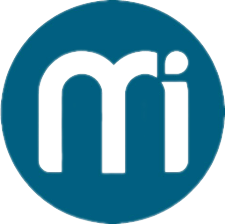3D Animation vs Stop Motion Animation: Which is Better?

Animation has been one of the most fascinating art forms in the modern era, revolutionizing industries such as film, advertising, gaming, architecture, and education. As technology continues to evolve, different animation techniques have emerged, each offering unique aesthetics, storytelling approaches, and production workflows. Among the most popular methods are 3D animation and stop motion animation.
Both techniques have their strengths and limitations, making the debate over which is better an interesting one for businesses, creators, and audiences alike. In this blog, we’ll explore the history, techniques, advantages, disadvantages, and use cases of 3D animation vs stop motion animation—and evaluate which works best in different scenarios.
Along the way, we’ll also highlight how businesses can leverage 3d animation services and 3d product animation services to achieve impactful results.
Understanding 3D Animation
3D animation, short for three-dimensional animation, is a digital process where objects are created in a virtual 3D space and manipulated to simulate movement. Unlike 2D animation, which deals with flat drawings, 3D animation adds depth, texture, and realism.
How It Works:
-
Modeling – Designing characters, products, or environments using specialized software.
-
Rigging – Building a digital skeleton to move the model realistically.
-
Animation – Creating movement through keyframes or motion capture.
-
Rendering – Converting the 3D scene into the final visual output.
3D animation is widely used in films, video games, advertising, architecture, medicine, and product demonstrations. Companies that offer 3d animation services use advanced tools such as Blender, Maya, and Cinema 4D to bring ideas to life with high levels of precision and realism.
Understanding Stop Motion Animation
Stop motion is one of the oldest animation techniques, dating back to the late 19th century. It involves photographing physical objects (such as clay figures, puppets, or everyday items) frame by frame, making small adjustments between each shot. When these frames are played in sequence, the illusion of motion is created.
How It Works:
-
Set Creation – Building physical sets, props, and characters.
-
Photography – Taking pictures of objects after tiny movements.
-
Frame Sequencing – Playing the captured images in sequence to create animation.
Stop motion animation has a handcrafted, organic feel. Movies like The Nightmare Before Christmas, Coraline, and Kubo and the Two Strings are iconic examples of this art form.
Aesthetic Differences Between 3D and Stop Motion
-
3D Animation – Offers clean, polished visuals with limitless creative possibilities. It can mimic real-world physics, create lifelike characters, and showcase products with hyper-realistic detail.
-
Stop Motion – Has a tactile, imperfect charm. The textures of clay, fabric, or wood give it a unique aesthetic that feels more personal and handcrafted.
Advantages of 3D Animation
-
Realism
-
3D can simulate lifelike environments, human movements, and physics.
-
Ideal for industries that need accurate visuals, such as medical and architectural visualization.
-
-
Flexibility
-
Changes can be made digitally without re-shooting.
-
Easier to update compared to stop motion, where physical reshooting is required.
-
-
Cost-Effectiveness at Scale
-
Once models are created, they can be reused in multiple scenes.
-
This makes it efficient for long-term projects or recurring brand campaigns.
-
-
Business Applications
-
Companies leverage 3d product animation services to showcase product designs before manufacturing, highlight technical details, and create engaging marketing videos.
-
Advantages of Stop Motion Animation
-
Unique Visual Appeal
-
Its organic, handcrafted look resonates emotionally with audiences.
-
The imperfections and textures add authenticity.
-
-
Artistic Credibility
-
Stop motion is often associated with creativity and artistry, making it popular in indie films, advertisements, and creative storytelling.
-
-
Tactile Engagement
-
Because physical objects are used, stop motion feels more “real” to audiences compared to digitally generated imagery.
-
Challenges of 3D Animation
-
Steep Learning Curve
-
Requires advanced software knowledge and technical expertise.
-
-
Rendering Time
-
High-quality 3D animation can take hours or even days to render.
-
-
High Initial Costs
-
Professional 3D tools and skilled animators can be expensive.
-
Challenges of Stop Motion Animation
-
Time-Consuming
-
Creating even a few seconds of footage can take hours or days.
-
-
Limited Flexibility
-
Any mistake often requires re-shooting the entire sequence.
-
-
Scaling Issues
-
Stop motion is difficult to scale for large projects or industries requiring frequent content updates.
-
3D Animation in Business Applications
Businesses today rely heavily on 3d animation services to enhance brand visibility and customer engagement. Here are some key use cases:
-
Product Demos – With 3d product animation services, companies can demonstrate the inner workings of complex products, such as machinery or electronics.
-
E-Learning – Educational platforms use 3D to explain complex concepts, like anatomy or physics.
-
Architecture & Real Estate – Virtual walkthroughs and 3D models help buyers visualize properties before they are built.
-
Advertising – Engaging 3D ads stand out in competitive markets.
Stop Motion in Business Applications
While less common in business compared to 3D, stop motion has its niche uses:
-
Creative Advertisements – Brands use stop motion for quirky, memorable ad campaigns.
-
Social Media Content – Stop motion is often used for short, shareable clips that stand out in a crowded feed.
-
Artisanal Branding – Businesses emphasizing craftsmanship and uniqueness benefit from the handmade aesthetic of stop motion.
Which is Better for Marketing?
-
3D Animation Services are better suited for industries requiring professionalism, scalability, and technical precision. For example, a technology company explaining product features benefits more from 3d product animation services than stop motion.
-
Stop Motion Animation works best when storytelling, creativity, and brand personality are the focus. For example, a boutique coffee brand might use stop motion to highlight its artisanal values.
Which is Better for Filmmaking?
-
3D Animation dominates mainstream cinema due to its flexibility and ability to create spectacular visual effects. Films like Frozen and Toy Story wouldn’t be possible without 3D.
-
Stop Motion shines in niche artistic films, offering a unique experience audiences rarely see in big-budget productions.
Which is Better for Beginners?
-
3D Animation – Beginners can access free tools like Blender to experiment and learn, though mastering it requires time.
-
Stop Motion – Easier for absolute beginners since it can be done with basic equipment (a camera, objects, and editing software).
The Future of 3D Animation vs Stop Motion
-
3D Animation – Will continue to dominate industries, with innovations in real-time rendering, AI-driven animation, and virtual production. Businesses will increasingly adopt 3d animation services for immersive storytelling and product demonstrations.
-
Stop Motion – Will remain a niche but valuable art form. While not scalable for every industry, it will always be cherished for its craftsmanship and creativity.
Final Verdict: Which is Better?
The answer depends on your goals:
-
If you want realism, flexibility, and scalability, then 3D animation is better. It’s the go-to for businesses, product marketing, and large-scale entertainment.
-
If you want creativity, uniqueness, and artistry, then stop motion animation may be your choice. It’s ideal for boutique brands, indie filmmakers, and artistic storytelling.
For most business applications, 3d animation services and 3d product animation services offer a clear edge due to their adaptability and long-term benefits. However, stop motion will always hold a special place in animation history for its charm and artistic value.
- Art
- Causes
- Crafts
- Dance
- Drinks
- Film
- Fitness
- Food
- Games
- Gardening
- Health
- Home
- Literature
- Music
- Networking
- Other
- Party
- Religion
- Shopping
- Sports
- Theater
- Wellness


